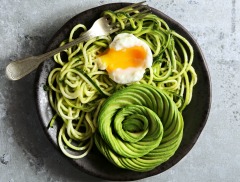Don't just meal plan... meal plan intelligently - with Meal Genius! Sign up for our free newsletter to get delicious recipes, sample meal plans and a whole lot more!
Nuts, Chestnuts
Chestnuts are best known for their appearance during the holidays in the United States, but are a more frequently enjoyed nut in Europe and Asia.
There are many varieties of chestnuts, all of which can be prepared in a myriad of ways including roasted, boiled, pureed, preserved and candied.
Estimated Glycemic Load: 7
The Benefits
- Special diets: Gluten-Free Diet, Gluten-Free/Dairy-Free Diet, Grain-Free Diet, Low Acid Diet, Low FODMAP Diet, Low Oxalate Diet, Low Starch Diet, Paleo Diet (Light), Paleo Diet (Strict), Pescetarian Diet, Primal Diet, Vegetarian Diet, Whole Food
- Excellent Source of:
- Good Source of: VitaminC, Manganese
- Preferences: No Fish, No Red Meat, No Pork, No Eggs, No Shellfish, No Gluten, No Seeds, No Soy, No Dairy, No Poultry, No Molds, No Citrus, No Pseudograins, No Coconut, No Corn, No Yeast, No Peanuts, No Nightshade, No Legumes, No Grains, Low Carbohydrate, Low Cholesterol, Low Fat, Low Sodium, Low Sugars, Low Saturated Fat
Related Foods
Related Nutrients
Selecting and Storing
Fresh chestnuts are available from September through February. Choose firm, plump nuts without shell blemishes. Store unshelled nuts in a cool, dry place; refrigerate shelled nuts in a covered container. Chestnuts can also be found canned whole, in pieces or as a puree.









